Abstract
A soil bacterium, Pseudomonas sp. strain P136, was isolated by selective enrichment for anaerobic utilization of o-phthalate through nitrate respiration. o-Phthalate, m-phthalate, p-phthalate, benzoate, cyclohex-1-ene-carboxylate, and cyclohex-3-ene-carboxylate were utilized by this strain under both aerobic and anaerobic conditions. m-Hydroxybenzoate and p-hydroxybenzoate were utilized only under anaerobic conditions. Protocatechuate and catechol were neither utilized nor detected as metabolic intermediates during the metabolism of these aromatic compounds under both aerobic and anaerobic conditions. Cells grown anaerobically on one of these aromatic compounds also utilized all other aromatic compounds as substrates for denitrification without a lag period. On the other hand, cells grown on succinate utilized aromatic compounds after a lag period. Anaerobic growth on these substrates was dependent on the presence of nitrate and accompanied by the production of molecular nitrogen. The reduction of nitrite to nitrous oxide and the reduction of nitrous oxide to molecular nitrogen were also supported by anaerobic utilization of these aromatic compounds in this strain. Aerobically grown cells showed a lag period in denitrification with all substrates tested. Cells grown anaerobically on aromatic compounds also consumed oxygen. No lag period was observed for oxygen consumption during the transition period from anaerobic to aerobic conditions. Cells grown aerobically on one of these aromatic compounds were also adapted to utilize other aromatic compounds as substrates for respiration. However, cells grown on succinate showed a lag period during respiration with aromatic compounds. Some other characteristic properties on metabolism and regulation of this strain are also discussed for their physiological aspects.
Full text
PDF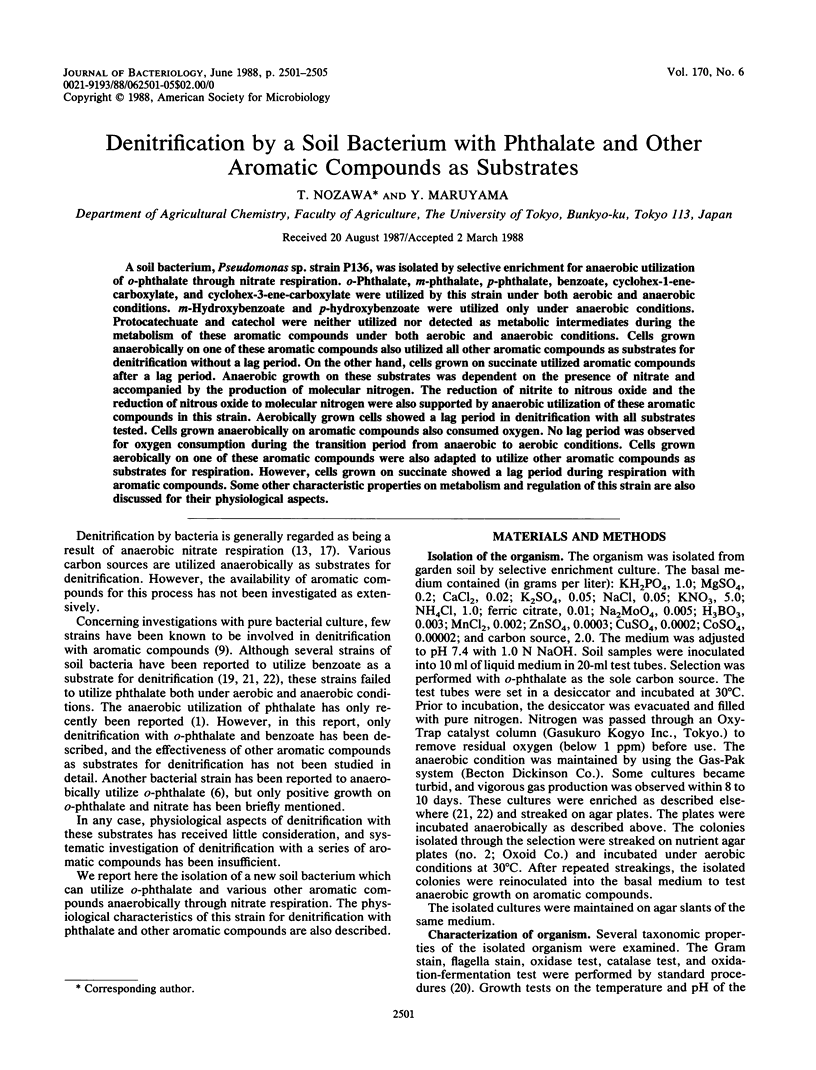
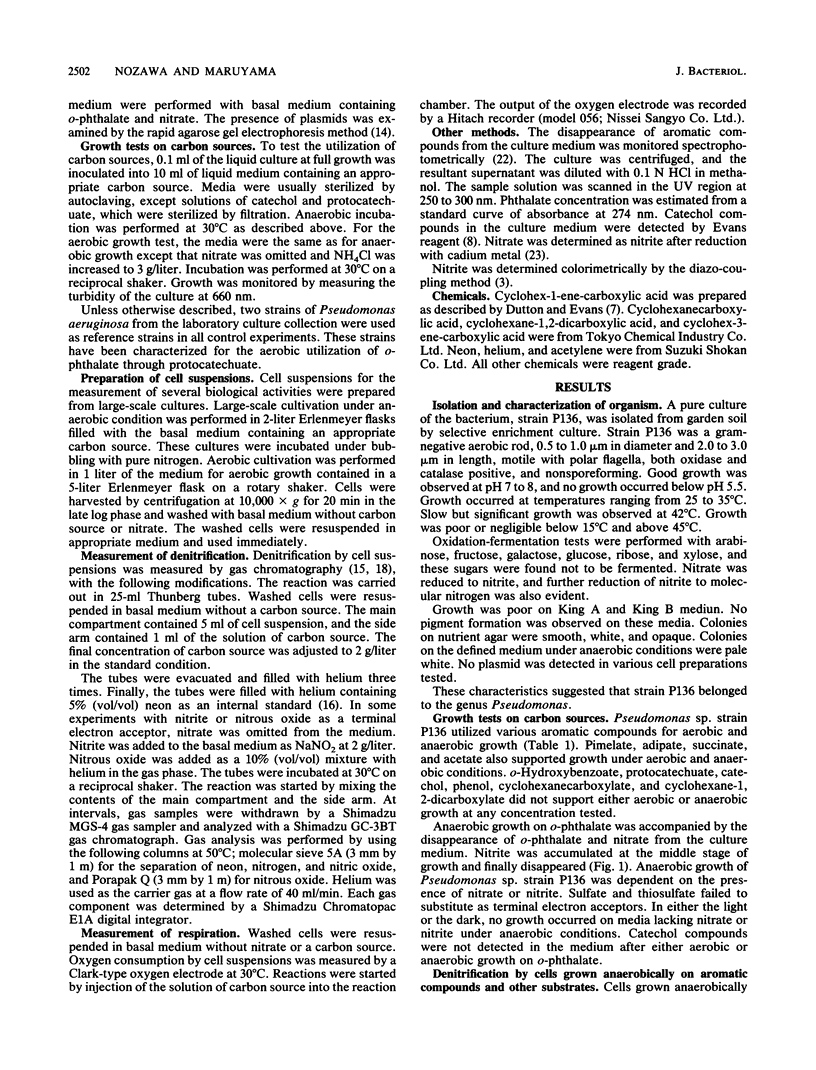
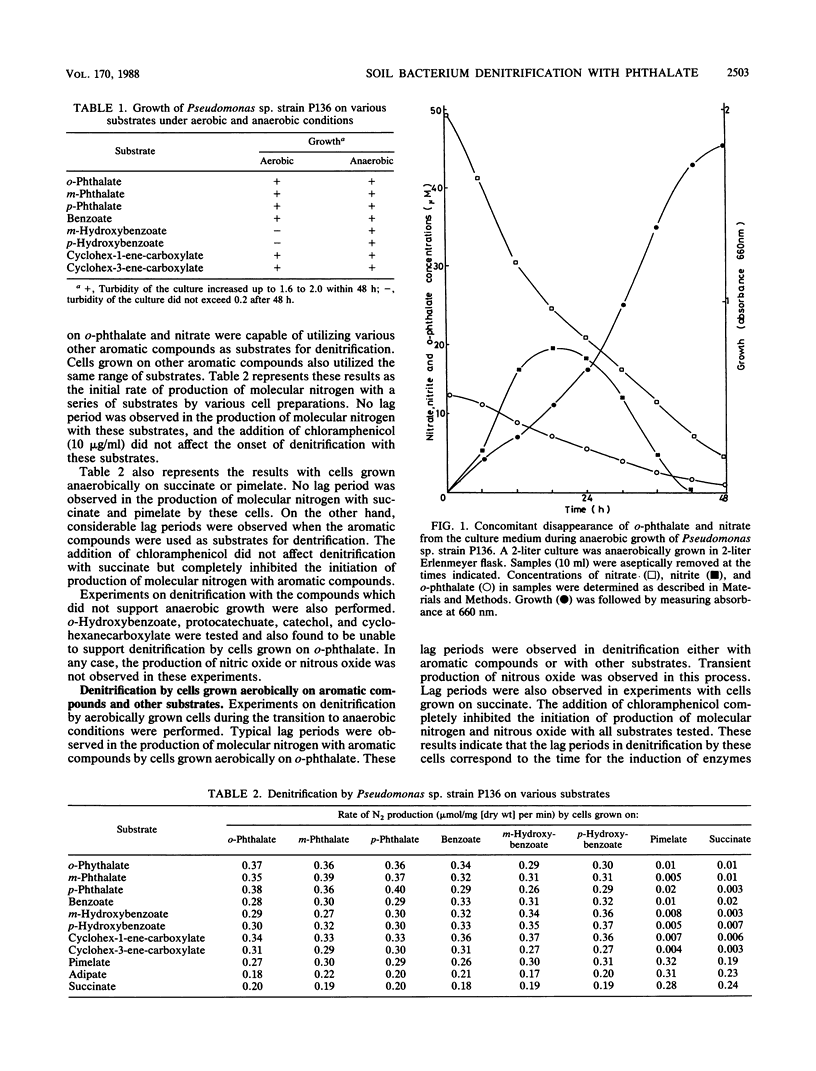
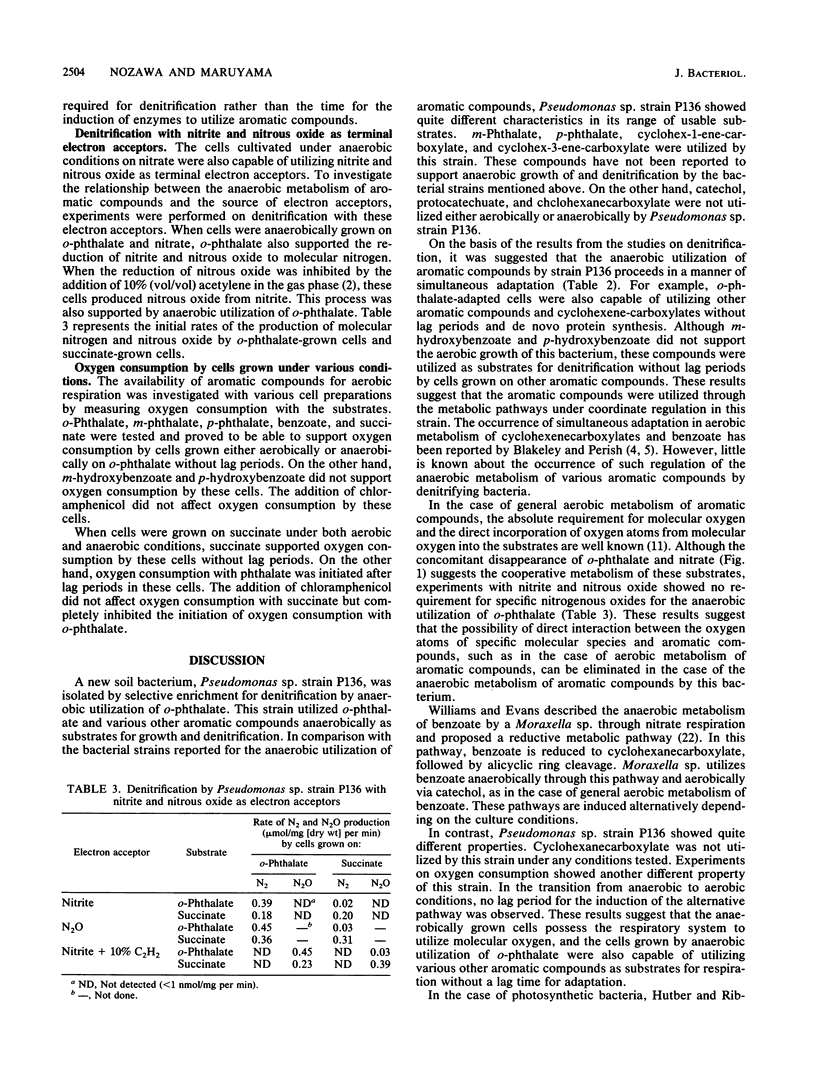
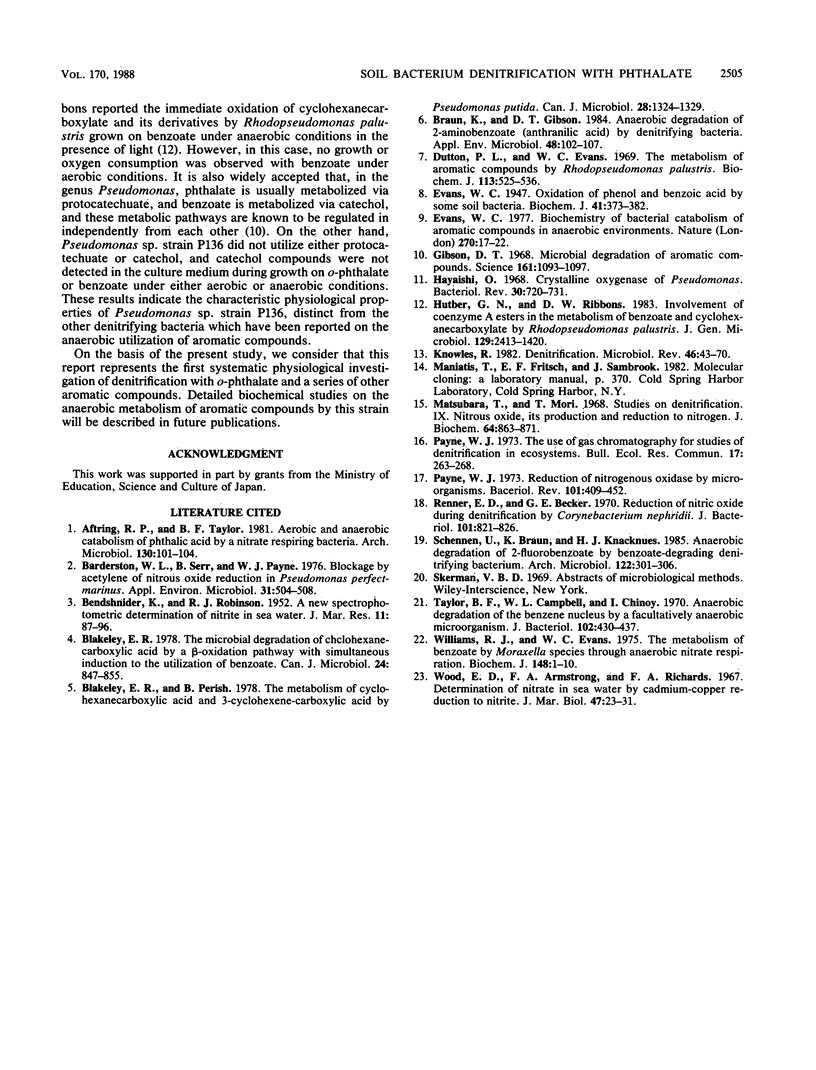
Selected References
These references are in PubMed. This may not be the complete list of references from this article.
- Balderston W. L., Sherr B., Payne W. J. Blockage by acetylene of nitrous oxide reduction in Pseudomonas perfectomarinus. Appl Environ Microbiol. 1976 Apr;31(4):504–508. doi: 10.1128/aem.31.4.504-508.1976. [DOI] [PMC free article] [PubMed] [Google Scholar]
- Blakley E. R. The microbial degradation of cyclohexanecarboxylic acid by a beta-oxidation pathway with simultaneous induction to the utilization of benzoate. Can J Microbiol. 1978 Jul;24(7):847–855. doi: 10.1139/m78-141. [DOI] [PubMed] [Google Scholar]
- Braun K., Gibson D. T. Anaerobic degradation of 2-aminobenzoate (anthranilic acid) by denitrifying bacteria. Appl Environ Microbiol. 1984 Jul;48(1):102–107. doi: 10.1128/aem.48.1.102-107.1984. [DOI] [PMC free article] [PubMed] [Google Scholar]
- Dutton P. L., Evans W. C. The metabolism of aromatic compounds by Rhodopseudomonas palustris. A new, reductive, method of aromatic ring metabolism. Biochem J. 1969 Jul;113(3):525–536. doi: 10.1042/bj1130525. [DOI] [PMC free article] [PubMed] [Google Scholar]
- Evans W. C. Biochemistry of the bacterial catabolism of aromatic compounds in anaerobic environments. Nature. 1977 Nov 3;270(5632):17–22. doi: 10.1038/270017a0. [DOI] [PubMed] [Google Scholar]
- Evans W. C. Oxidation of phenol and benzoic acid by some soil bacteria. Biochem J. 1947;41(3):373–382. doi: 10.1042/bj0410373. [DOI] [PMC free article] [PubMed] [Google Scholar]
- Gibson D. T. Microbial degradation of aromatic compounds. Science. 1967 Sep 13;161(3846):1093–1097. [PubMed] [Google Scholar]
- Hayaishi O. Crystalline oxygenases of pseudomonads. Bacteriol Rev. 1966 Dec;30(4):720–731. doi: 10.1128/br.30.4.720-731.1966. [DOI] [PMC free article] [PubMed] [Google Scholar]
- Knowles R. Denitrification. Microbiol Rev. 1982 Mar;46(1):43–70. doi: 10.1128/mr.46.1.43-70.1982. [DOI] [PMC free article] [PubMed] [Google Scholar]
- Matsubara T., Mori T. Studies on denitrification. IX. Nitrous oxide, its production and reduction to nitrogen. J Biochem. 1968 Dec;64(6):863–871. doi: 10.1093/oxfordjournals.jbchem.a128968. [DOI] [PubMed] [Google Scholar]
- Payne W. J. Reduction of nitrogenous oxides by microorganisms. Bacteriol Rev. 1973 Dec;37(4):409–452. doi: 10.1128/br.37.4.409-452.1973. [DOI] [PMC free article] [PubMed] [Google Scholar]
- Renner E. D., Becker G. E. Production of nitric oxide and nitrous oxide during denitrification by Corynebacterium nephridii. J Bacteriol. 1970 Mar;101(3):821–826. doi: 10.1128/jb.101.3.821-826.1970. [DOI] [PMC free article] [PubMed] [Google Scholar]
- Taylor B. F., Campbell W. L., Chinoy I. Anaerobic degradation of the benzene nucleus by a facultatively anaerobic microorganism. J Bacteriol. 1970 May;102(2):430–437. doi: 10.1128/jb.102.2.430-437.1970. [DOI] [PMC free article] [PubMed] [Google Scholar]
- Williams R. J., Evans W. C. The metabolism of benzoate by Moraxella species through anaerobic nitrate respiration. Evidence for a reductive pathway. Biochem J. 1975 Apr;148(1):1–10. doi: 10.1042/bj1480001a. [DOI] [PMC free article] [PubMed] [Google Scholar]


